
Although Jyn is accompanied by a male rebel commander, she deftly wields her weapon to destroy the inhuman storm troopers who come in her way. She inspires the scared allies to join her fight and gains the trust of the commander sent to kill her father, who relents due to her integrity. However, Jyn is not cold and emotionless. She does have a feminine, sentimental and loving side when she is briefly reunited with her father. She feels affection for the commander accompanying her on her mission and risks her own life to save a helpless child caught in the crossfire. In the climax, she boldly faces the antagonist on her own and completes her mission although sacrificing her life for the cause.
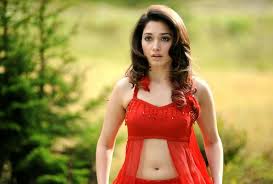
When I compare this to the average Tamil film or even a big budget one like “Bahuballi”, what strikes me is that the female character in “Rogue One” is not required to expose her body, lure or seduce the hero or let him lead her mission and rescue her from trouble. Jyn is never helpless or emotionally weak despite losing her mother and being separated from her father as a child. She does everything and more than her male counterpart who actually plays second fiddle, allowing her to dominate the scenes and move the story forward.
This trait of strong female protagonists is not an aberration in Hollywood. There are numerous examples of successful films that transcend genres just from last year – Ellis Lacey (Saorise Ronan) in “Brooklyn”, Joy Mangano (Jennifer Lawrence) in “Joy”, Carol Aird (Cate Blanchett) in “Carol” and Imperator Furiosa (Charlize Theron) in Mad Max: Fury Road.
This begs the question, why can’t any of these characters be part of a current Tamil film? Why are female characters in Tamil cinema continually portrayed as weak and incapable objects of desire? When can we see a change of roles from the stereotypical love interest, the item girl, the sacrificing mother or the sister who needs to be protected?
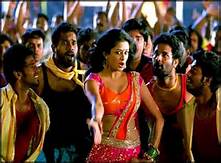
Very rarely is the heroine depicted as an individual whose ideas and thoughts matter. There have been exceptions in the past in the films of director K. Balachander but this was in the 1970s and 1980s.
Do films reflect the prevailing values and attitudes of a society? If you accept film as an art form then you have to agree that the ethos of a particular culture permeates its art. So what are the current prevailing values, opinions and prejudices in our society?
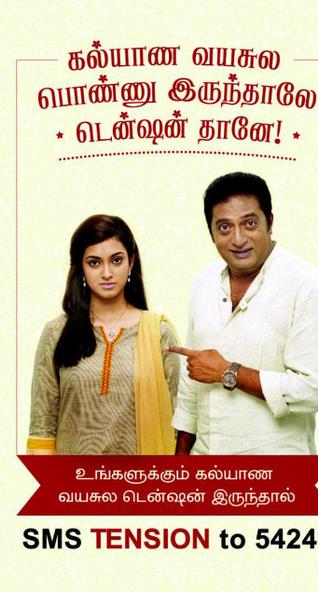
This advertising campaigns plays on the fears of an urban father. Not only in rural areas, but in cities as well, the boy is perceived as an asset, a source of future income and protection in the parents’ old age whereas the girl child is seen as an economic burden.
Even if she is allowed to get an education, she is not encouraged to work and be financially independent. Indian women still require their father’s and husband’s permission to work. India has one of the most gender biased work forces in the world where only 1 in 5 employed is a woman.
Once she is in college, her parents are only worried about finding her a suitable groom and the accompanying wedding expenses including dowry. So from the time she is born, she is seen as a liability to the parents until she is married off. This may be changing in a minority of Tamilian households but still holds good for the majority.
How do films figure in this? A study was conducted on sexual violence in the Hindi films of 1997-99, where the top ten box office hits certified as U or U/A were examined. Below are the posters of two of the films analyzed. The findings of this study are still applicable and relevant to the current Hindi and Tamil films.
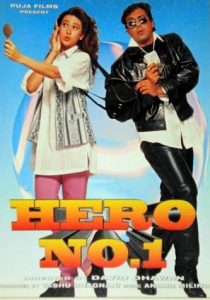 |
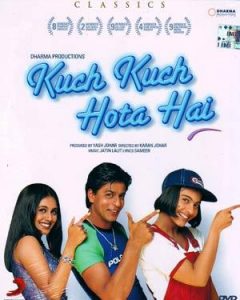 |
The findings revealed that male characters were the perpetrators and female characters were the victims in all situations. What is most disturbing is that it is the heroes who committed moderate crimes against the heroines such as stalking, eve teasing, sexual harassment & domestic violence. But since the stalking and eve teasing scenes were usually accompanied by music with romantic lyrics, it was depicted as fun. The films imply that such behaviour was actually enjoyable. In reality, these are crimes that are punishable by law.
The villains committed severe crimes such as rape and murder and they were eventually punished for these actions but the hero was not condemned but actually rewarded as the heroine finally relents and gets romantically involved.
One can conclude that in the moral universe of these films, such acts against women are appropriate, normal & even romantic. Scenes of domestic violence of the hero slapping the heroine or his sister or the father slapping the mother are also condoned, justified and accepted. So not only is the woman shown as a sex object, she is also portrayed as the weaker sex who needs to be dominated by a man to prove his manliness.

While no study has been conducted of Tamil films, the parallels are obvious. A popular, award- winning Tamil director and producer of blockbuster hits has openly admitted that his films are mostly hero-centric. “I just travel with the script and bring in women who elevate the hero, without unnaturally strengthening their roles.”
“If the costume designer comes to me with the heroine’s clothes covering up to the knee, I would strictly order them to shorten the length. I don’t mind even if my heroine is not happy or comfortable, but I insist and get it done. This is because audiences pay money to see the heroines in such clothes. When it comes to commercial films, they are paid only to provide the required sizzle to the money paying audiences.” These are the words of another director of a recently released Tamil film.
Another disturbing trend in Tamil cinema is of regressive song lyrics abusing women if they spurn the hero. These songs urge men to be physically abusive towards women in the guise of “Break up” songs.
The eminent social psychologist Albert Bandura in his social learning theory concluded that heroes represent the essence of ‘ideal manhood’ and male sexuality and that being aggressive in cinema is equated to ‘being manly’. To quote Bandura “Research on social learning from media portrayal suggests that viewers are more likely to emulate behaviours that they see in media when the modeled behaviour is portrayed as rewarded.”
The deep concern here is that in Tamil cinema, a likeable, hugely popular hero who is their idol is perpetrating sexual violence and being rewarded.

Is it fair to say that Indian youth get influenced only by films? Again several studies conducted reveal that a major source of sex education comes from film & TV. Even today, sex is a taboo topic for majority of Indian households and not discussed in families until the time of marriage. Cinema plays a significant role in shaping ideas about gender roles, masculinity, & violence. India produces the largest number of films worldwide, about 800/year with a large viewership of about 10 crore theatre goers (1999), that cuts across age groups& socio-economic classes. Youth watching the same movie multiple times is a very common Indian phenomenon and movies are accessed via cable & satellite TV. If sexuality is rarely discussed in other contexts, this source becomes hugely influential.
In addition to this, there are other regressive trends among youth. A recent study conducted in 10 Chennai colleges revealed that 21,000 students started watching rape porn every year. 45% of the boys watch videos of rape & gang rape online.
According to the National Crime Bureau more than 90 women are raped every day in India. Eve teasing & sexual harassment is very high among Indian youth. Tamil Nadu accounted for 923 rape victims in 2012.
Cinema is a powerful art form capable of huge impact amongst its audience and politicians have exploited it to its utmost. The Russians have used it to inspire their socio-political revolution in the 1920s. Hitler used it amazingly as a propaganda tool to amass support for his diabolical campaigns during the 1940s. In no other state has there been a closer connection between politics and cinema as there has been in Tamil Nadu.
Is there any doubt about the impact of cinema on the Tamil audience? So isn’t it time that the next generation of filmmakers create a revolution in gender issues and break the stereotypical portrayal of women? If you look around you, in reality women are breaking these barriers. Women in Tamil Nadu have made their mark in several fields, becoming CEOs of companies, world class athletes and heads of government to name just a few.
While lakhs of students united at the Marina beach to fight for a sport that is a display of Tamil masculinity, a small group of women were also fighting to claim their right to public spaces through their campaign “I will go out”. Unfortunately this campaign is primarily online with very few of them actually being able to go out and protest.

As a screenwriting teacher guiding students through their ideas, I feel morally obligated to instigate a change. On the one hand students should be allowed the creative freedom to express themselves but on the other hand isn’t it the role of the teacher to impart some important values? So what should I do when a student pitches a feature film idea of a psychopathic serial killer who rapes and mutilates innocent women as revenge for being sexually molested at age 10 by his step mother? Or a story of an underage girl married off to her maternal uncle to suffer verbal and physical abuse because she is domestically inexperienced and gets slapped by her parents for trying to leave him?
Write back and let me know your thoughts.
– Lata Murugan

I guess this is a very sad truth. Unfortunately I don’t watch a lot of Tamil cinema and hence can’t comment on them. But I guess the situation is more or less the same across all the regional film industries in India. But I believe that the trend is changing, though very slowly, and female oriented films too are being accepted more than they ever were before. Filmmakers are daring to make movies with female protagonists these days (eventhough they may not be huge commercial successes as the hero-centric ones) and I believe there will be a change definitely, even if very gradually. But having said that, rape porn? Now that is seriously sick and miserable. I really don’t know how we are going to tackle that together, as a society. But I would like to be optimistic about that too and hope that people would realise that rape porn and child pornography and all of those are seriously so very sick and collectively say no to them.
Ma’am, this blog is really an eye opener. You always inspire me. Really appreciate you being so vocal about this and coming forward everytime to guide young film makers to understand the importance of respecting women. Hats off!
Cinema plays a huge role in our life whether we accept it or not .. it sets the tone and pace of our lifestyle … I totally agree that we tend to appreciate and fall in love with the mannerisms and thoughts of the role models we make out of the movies we watch .. I am really glad that this aspect has been given a sincere thought , with respect to the way women are treated in the movies . There’s a slow shift to woman protagonists but ts just a drop in the ocean … what’s most important to me is that less violence must be portrayed and women should not be shown as sex objects or weaklings. We need the world to know that we are capable of defending ourselves and we have much more talent to offer than just bodies… I think men and women can be rational and give in to this initiative where the scripts can be more thoughtful and bring out the best in society as well as portray women as strong respectable beings !! If the media can do the bit , rest will follow …
Lataaaaa! Awesome. So important. May I suggest you read Steve Derne? He has a book called Movies, Men and Masculinities where he does some important audience ethnography. The media economics and political economy researchers will suggest following the money trail. Who are the paying audience members? Who are the decision makers?
A very relevant topic, not just to the tamizh industry, but to our neighbours as well. Though this trend is changing with inde filmmakers and young directors, most regional films made in the mainstream cinema still stick to the idea of using a heroine as an eye candy (sorry to say) or as a plot element for the hero to express his heroism.
Some makers might think women-centric drama might dilute the commercial aspect and might result in poor turn up at theatres. But there are so many interesting ideas within the commercial zone that one can explore with a female protagonist. I believe it is only going to open up the business if the girl gets to play an equal and interesting role.
Not sure when this trend will change drastically. But perspectives will change and I have Faith in our modern day filmmakers.
Nice write up Ma’am. I request you to throw some light on more such topics.. All the best. Enjoyed reading it.
Important and thought-provoking message! But the eternal question needs to be asked: which is the cause and which is the effect? Many young, male directors write screenplays that mirror their life, friends and values… and as a result, we have the cinema that we do.
But I strongly agree that even if society is still not where it should be in the twenty-first century, movies can lead the way and help bring about the change in how women are perceived, valued and treated.
On the question of whether you should support your students in telling their stories where women are not treated right, I still feel you should help, not just because of creative freedom — which is something we should respect even as we hate the message being conveyed — but also because you could ensure that the perpetuators of mistreatment towards women are not glorified or normalised. A villain can do evil things as long as he’s the villain and will almost certainly not be emulated. It’s the hero’s behaviour we have to watch!
There is no doubt that mainstream cinema is a huge influence on our society and also to some extent is a mirror of the same society. However, sexual abuse and disrespect are common to even what we think are the more progressive societies.
I think it is great to see a balanced view from cinema, it is important to have movies that showcase the abuse, but it is also important to have movies that show stronger female characters who overcome dire situations. A movie like ” chak de” for example had a group of strong female leads, while a movie like “Arth” portrayed a woman who chose a different path from that of forgiving her husband and leading yet another compromised life.
Bottom line, show both facets of society but don’t portray our girls as weak or physically incapable, when they have in them a strong spirit that can rise when needed.
Yes Lata, we need more strong independent female protagonists in our Tamil movies.
Reel and real life have so much influence on each other.
Why not positive and progressive roles for women in reel life – Mary Kom and dhangal being a few examples.
I was recently on a flight where the guy in front of me was watching a Telugu film about a woman MLA and a man who relentlessly teases and insults her in the name of “wooing” and finally “wins” her over by telling her no one will marry her if she is headstrong and successful, so she should consider him. Only to then change his mind and marry a subservient woman who is “offered” to him by her father. I had my own movie on but have to say I was riveted by the tripe on in the seat ahead of me. I guess I am out of touch. Since I studiously avoid such movies, I had forgotten how retrograde they really area, and was shocked by how the “headstrong” woman was juxtaposed with the “sweet and simple” woman who ultimately got the hero (a true ruffian). All this to say your point is very well taken, Lata.
However, I live in America now, where a very qualified woman did not get the Presidency because of people very similar to our Telugu hero who could not stomach a woman in power, but loved to pieces a misogynistic, bigoted billionaire, voted him to the highest office in the land. So Jyn is still futuristic and I don’t see Jyns around me in my daily life even on the liberal NE United States. But if cinema is aspirational and a predictor of what we fantasize about, then so be it!
You just read my mind mam, these thoughts have remained in my mind since my childhood. Raising my voice against it made me an outsider within the society , inspite of all odds I have tried to break the trend where women are just treated as liability in a small way .
I joined the institute to make movies , especially ones that portray women in another light .
Madam,
This is a topic which should be focused by all film makers while making films. But we cannot deny the fact that tamil industry made the films like abhiyum naanum and mozhi which were my favourites. Yes, Such films would not appear also to be handful of the whole films to be taken but proves that female protagonist made some guest appearances during this time…
Though I don’t know the box office collections of those films.
Dear Lata,
Maybe you could tell your student to co-write the same story with a woman.
I have a theory about gender in writing. I’d like to know what you think.
Consider a staple scene in Tamil cinema – the hero has a sister and we all know what happens to her, and why. Because then, the hero though benign and gentle, can be aroused to unleash wrath upon the villain. To arrive at this display of heroism, he has to have a sister. (Whether a man seeking revenge is heroic or not is debatable, but it certainly makes for entertainment.) Now, this victim for whom his heart aches, cannot be his girl – she simply cannot be violated. I cannot think of a movie where the heroine is raped, heals from it and then continues to receive the affections of the hero. That somehow appears to be shameful or unheroic to the Tamil senses. Damage is fine but only if it is collateral. The sister, after helping advance the plot, can be quickly discarded. A conveniently located well usually does it.
Now, it is my theory that if there had been a woman in the room when such a scene was being written – “Ungalukku enna, ippo hero ku kovam varanum. Avlo daaney? Andhukku edukku thangachi. Vera idea yosikalam.”
If women become an integral part of screenwriting – not a token presence, but as people whose opinions matter, the first thing that would change – rape as a plot device. Such an inclusive environment will not only save us from this unimaginative and often crass plot device, but will also allow the blossoming of a new creative dimension, in both women and men.
Sincerely,
Janani
It all boils down to whether cine-art reflects reality or whether it caters to what people want to see. Catering to and reinforcing stereotypes seems to sell, and unfortunately films as a medium of change , or of inducing thought are few and far too infrequent. Commercial considerations override everything else, and as in our democracy, it is the front benchers who rule. Nothing wrong, in itself, with that…but reinforcing the base does not make it sublime..
Well researched and well written article! Nicely connects the dots to make a compelling case!
Hopefully this article will trigger some change in the Indian movie industry, not just Tamil. But there have been some exceptions even in recent times like 36 vaidhunile where Jyotika as a young Mom has inspired women to get on their feet. But I suppose these movies are not really box office hits as there no seducing , disrobing (!) scenes.!
Cinema indeed is a powerful medium as I recently witnessed in my own life after watching Daangal where the fighter in her never gives up, when you almost want to throw it all away!
Yes, yes and yes. Great post. Valid points supported by thoughtful examples and statistics.
Films unquestionably provide the greatest fodder to our youth, and adults for that matter, for social learning (Al Bandura – as you point out). To Senthil’s pertinent question about life imitating art or vice versa, if art is imitating life, bringing the harmful aspects to screen only serve to further reinforce negative social norms. Some important films address gender norm in their stories like Divya mentions above – ‘Pink’, ‘Bol’, ‘Dangal’, etc. Those are exceptions to the bulk of the films produced.
Couple thoughts about what film scripts could perhaps do to be gender transformative:
– Not only cast strong female characters – some films like ‘Kahaani’, ‘Arth’ may have done it – but also cast balanced relationships where men are working side by side with a woman in a story where the gripping story is more important than the sex of those playing the roles. A positive and gender neutral relationship can be modelled
– Change does not happen overnight, just like you cannot suddenly take jallikattu and leave a cultural void, the change needs to be gradual. Perhaps first following the principal, like with medical students, of ‘first do no harm’. Give the viewers their masculine heroes but try to transform what ‘manliness’ means – from the eve teasing, violence and harrassment to strength and courage of character, ability to stand up for things that are wrong (especially against women) and let them bash up a few baddies if that makes them feel better.
Over time if less and less of the harmful stuff is seen the social norms too will hopefully reflect that.
Lastly, the idea held by many scriptwriters that the formula needs to be followed for films to have commercial success, has to be challenged. That kind of thinking is just laziness or lack of creativity (or both). A clever story should not rely on the hackneyed, gender exploitative crutches.
Thank you Lata for being a film teacher who challenges young minds to think differently. We need more women and men like you stepping up to the challenge and questioning the overly long status quo.
Well written article..Lata..Even today a Hero’s role in a Tamil cinema is designed to satisfy his fan base..The screenplay is written to suit a Hero’s public image..The director takes extra care not to damage that..everyother charecter including the Heroine is sculpted to glorify the hero..The reason is..Its movie business..Very few directors treat this media as an Art form..Sanjay Leela Bhansali allowed his Paro and chandramukhi to do a Dola re…to satisfy his Distributors..In my opinion..this scenario would definitely change with more female directors calling shots..Gauri shinde,Zoya are already doing wonders..Suhasini gave us Indira..A movie actually is an extended mindset of a director..K.Vishwanath’s ladies were true Heroines…Today the success of 36 vayathinile gives us hope…If we believe that movies reflect society..then we know where the fault lies..Lets experience..more men respecting and appreciating women real life incidents…Cinema would automatically change….
Latha,clearly a lot of thought and research has gone into what has justifiably caused you much angst. Totally empathise. Haven’t watched a single Tamil flick, only dubbed versions, but I know the genre that celebrates chest-thumping, muscle flexing men and skimpily clad damsels who are either objectified or cowering under abuse. Sadly, cinema is based on what sets the cash registers ringing and while cinema is a great influence, I believe that these cinematic postulations are a spin-off of uneducated mindsets. At schools, in our households and in our social interactions, we have to forge sounder templates for our young ones to emulate. In the meantime, I hear brave voices like yours gathering force and rallying around with spunk in movies like ‘Pink’. The voices are feeble yet but I think a quiet revolution is brewing.It’s a distant rumble but reason enough to hope:)
We need to reach our boys that women need to be respected. That will go long way in bringing about a semblance of gender equality. Education too plays an important part in the process
Movies at mainly made for the masses and most directors throw in stuff to bring in the crowds. As the above points get mainstream they will find not many takers for the coarse stuff and refine their movie making which will hopefully lead to an upward spiral…
I personaly feel as a filmmaker one must come from the thirst to share a story or express an idea. The evil that we have been disscussing here is one among many others. I beleive it does not matter what piece of work it is but why does one make it in the first place? Does it come from the wanting to share or just to get appreciated and become rich?
It is important that our industry has many more who does not take it up as a job but also sees it as a means to practice integrity because we are today very much instilling thoughtprocess and lifestyle into society. As a man I have understood that empathy is the only key to a better female charecter in my piece hence when we empathise we can’t be perverts.
Mam just read it.. It is absolutely brilliant.. loved the examples given and the posters too.. the message is very clear and inspires me to come up with a bold meaningful women characters on-screen. 🙏
A true eye opener and I hope it will inspire the future film-makers to change the way women are portrayed. On one hand we have women objectified and at the same time these people worship goddesses. It’s a very hypocritical society we live in and atleast there’s a gradual change in Bollywood and one can hope that it’ll trickle down to Tamil cinema.
As a society constantly trying to ape the west, there’s still much to learn! Looking forward to reading more articles!
Finally!!! U made it as an article. Actually, This topic is a Constant emphasis from ur side which actually motivated me to write a feature with a strong lady protagonist…
Recently, a famous comedian from Kollywood tweeted ‘easily accessible porn sites are the only reason for youngsters to commit rape’ but the same actor portrays women in a bad shape with foul comments against her in most of his movies. Even in his very recent movie, he did all kinds of double meaning dialogues which directly influences the youngsters to do the same against women. Yes, his tweet gives out a valid point, but the sad news is that his lack of realisation about he doing the same through another medium where the scale is even more larger than porn sites. More importantly, here our consumer includes kids too . I consider this lack of realisation is the problem in our industry.
Sorry to say that I was also one of those kids being strongly influenced by this actor during school days which I deeply regret for it now.
The ‘missing female protagonist’ needs to be found .. For that, the deep insights poured in the article should reach people not just for motivation but also make them realise that we r in a most responsible position …. Will surely share this article to my screenwriter colleagues and industry friends to make sure that it spread across and aware the ‘unaware’
Very true Maam. The gender based bias still exists and how ever modern we say we are, deep within the still old misogynist and maverick thoughts are embedded. As you have said, when women are shown as protagonist, they are either role played as sexual desires or portrayed week. Films like Parched and Original Sin have been applauded by critics but yet women are displayed as an object of lust and desire. We need to change and this can only be done through enlightening the youth. We learn by what we see. So we need to make sure what we see is embedded in our brains so that we bring a change. We need to “DO” to bring a change. “DOMINATION” also begins with a “DO”. So lets DO to bring the change.
Enjoyed reading this almost as much as listening to you at a dinner table sometime last year;)
Whilst we can split hairs whether art imitates life or vice versa, we cannot ignore the often harmful effects of the media on our youth, and I think as a teacher you’ve taken a bold step to open the eyes of your students. Congratulations! Looking forward to reading your next one – perhaps about the Tamil movie hero?
You are soo inspiring to all of us. The best part of your writing is that it explicitly points out the truth in the most common way.
Projecting female protagonist as victims is a bitter truth. This has been happening for ages not only in Tamil films across indian movie industry. We talk at length about how great our culture is because we all are exception hunters and focus only on the good part of it leaving the bad. In part women are also responsible for this kind of treatment and portrayel because they accept it readily without any hesitation. I think its time for all of us to come together and make collective effort to put an end to this misery. I personally respect women a lot and believe they are not equal and far better than men and must get the long due respect,equal opportunity and right place in movies,in our communities and society. Lets extend our support to women empowerment.